Diamond cutting has undergone significant transformations throughout history, leading to the emergence of various diamond shapes and appearances. In the early days, diamonds were cut manually before the advent of machinery.
With the introduction of new cutting techniques, diamond cutting entered a new era of precision. This gave rise to the brilliant-cut diamond, a unique cut renowned for its exceptional brilliance, fire, and overall sparkle.
The brilliant-cut revolutionized the diamond industry, setting a new standard for cutting quality and allowing diamonds to radiate a dazzling brilliance. However, while modern diamond cuts have gained popularity, some individuals appreciate the charm of antique diamond cuts.
If you’re interested in identifying an old European cut diamond, continue reading for valuable insights.
DESIGN YOUR OWN ENGAGEMENT RING: START WITH A SETTING OR START WITH A DIAMOND. IT’S REALLY UP TO YOU!
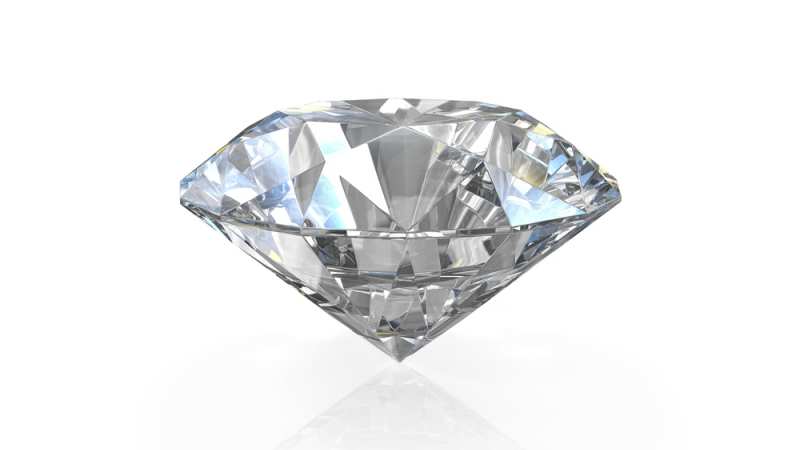
What Is An Old European Cut Diamond?
The old European cut diamond, which originated between 1890 and 1930, is recognized as the standard round diamond of that era.
The old European cut diamond bears resemblance to the modern brilliant-cut diamond, but there is a distinctive feature that sets them apart—the small circular facet in the center of the diamond’s table, a remnant of the large culet in the old European cut.
This antique diamond cut is characterized by a high crown, a small table, and a large culet, giving old European cut diamonds a captivating presence on the hand.
Old European cut diamonds typically have 58 facets, with the culet being the bottom facet. The presence of a large culet allows more light to escape through the bottom of the diamond, resulting in the appearance of a dark circle. However, not all diamonds have a culet. Many modern diamonds have a sharp tip at the bottom that reflects light, preventing such circles from forming on the table.
When identifying an old European gem, another aspect to consider is the frosted girdle, which refers to the facet encircling the diamond between the crown and pavilion.
Moreover, antique diamonds may exhibit a slightly imperfect round shape and often have lesser symmetry compared to modern brilliant cuts.
It’s important to note that old European cut diamonds were cut to maximize carat weight rather than brilliance. As a result, they may not possess the same level of dazzling sparkle as modern brilliant-cut diamonds. However, they were specifically cut and polished to showcase their beauty under candlelight, aligning with the era in which they were popular.
Unlike today’s diamond cutting methods that utilize advanced technology, diamond cutters of the past relied solely on their eyes to hand-cut these unique gems, resulting in each stone being one-of-a-kind. Old European cut diamonds were particularly prevalent during the Art Deco period, and vintage jewelry enthusiasts continue to appreciate their charm.
In contrast to the modern brilliant cut, the old European cut is renowned for its “inner fire.” This refers to the visual contrast between bright and dark flashes of light that are seen within the gem due to the arrangement of its facets. However, measuring and quantifying this inner fire is challenging since the way diamonds interact with light can vary based on their individual characteristics.
In the 1930s, diamond professionals adjusted the proportions of diamonds to enhance their brilliance. Consequently, some believe that the current angles employed in diamond cutting may have diminished the inner fire found in old European cut diamonds.
Old European diamonds tend to display a face-up pattern of light and dark, which some non-jewelers might describe as a “checkerboard” pattern. In contrast, those who prefer older cuts often perceive the current brilliant diamond as having a “splintery” appearance due to its tighter mosaic of light and dark areas.
If you’re interested in purchasing a high-quality old European cut diamond, we are here to assist you. Please continue scrolling for more guidance.
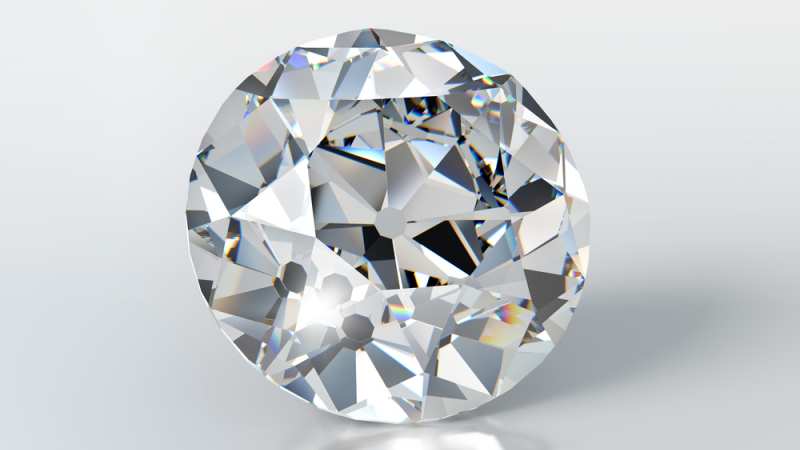
How To Buy A Great Old European Cut Diamond
When purchasing an old European cut diamond, it can be challenging to determine which aspects to consider. Unlike the modern brilliant cut, the old European cut does not have cut grades, so you must rely on your own judgment and the knowledge of your jeweler.
Symmetry is a crucial factor in identifying a high-quality old European-cut diamond. Pay attention to the length-to-width ratio and look for a round outline. Ratios below 1.1 are desirable, with 1.05 or less being ideal. Anything above 1.1 may result in a bulging or off-shape appearance.
Inspect the diamond from different angles, including the side view. Ensure there are no unusual bulges, as they could indicate that the stone was cut to increase weight at the expense of performance. It’s best to avoid such stones as you may overpay for a diamond that doesn’t showcase its full potential.
Examine the diamond from top to bottom and vice versa, observing the symmetry of the facets. Asymmetrical facets can hinder the diamond’s ability to reflect and refract light, making it appear less desirable.
Evaluate the diamond’s performance under various lighting conditions, such as natural sunlight, fluorescent workplace lights, and warm home bulbs. Each lighting condition will have a different effect on the stone’s surface.
View the diamond under a daylight-equivalent light bulb with an ultraviolet component to observe its hue. This lighting condition is commonly used as a standard for color grading.
Observe the play of white and colored light within the diamond. The light should dance and scintillate as it passes through the stone.
Pay attention to dark areas within the diamond. Avoid diamonds where dark regions cover more than 25% of the stone, regardless of the viewing angle. Move the diamond around and observe the patterns of light and dark.
In old European-cut diamonds, adjacent facets often darken simultaneously. While high-quality stones may not exhibit this characteristic, they are rare to find. More commonly, you will encounter diamonds with numerous facets that darken at different angles but not simultaneously.
Diamond grading reports from gem laboratories do not provide cut grades for old European-cut diamonds. However, they do assign color and clarity grades.
For white diamonds, the color grade indicates how colorless the diamond appears. The color scale starts with “D” for colorless diamonds and progresses through the alphabet, with “Z” representing stones with significant yellow tints. Color grading for “fancy colored” diamonds is different.
For modern round brilliant diamonds, color grades of I or above are recommended for a colorless appearance in white gold or platinum settings. Color grades of M or higher are recommended for a colorless effect in yellow or rose gold settings.
Old European-cut diamonds emit a more significant amount of colorful light compared to modern round brilliants. Achieving a colorless effect with an old European cut may require stones with colors one or two grades higher.
Many old European-cut diamonds have lower color grades, often appearing yellow or brown in any setting. This contributes to their vintage appeal and resemblance to antique stones.
The clarity of a diamond refers to the presence and size of flaws. What matters is whether these flaws are visible to the naked eye and if they affect the diamond’s structure.
Eye-clean old European-cut diamonds with high clarity grades of F, IF, VVS1, or VVS2 are commonly chosen. Eye-clean diamonds with clarity grades of VS1 or VS2 are also available. In SI1 and SI2 clarity diamonds, there may be no apparent flaws, but careful examination is necessary before making a purchase.
If blemish-free diamonds are of importance to you, inquire with suppliers about the eye-cleanliness of the SI stones you are considering.
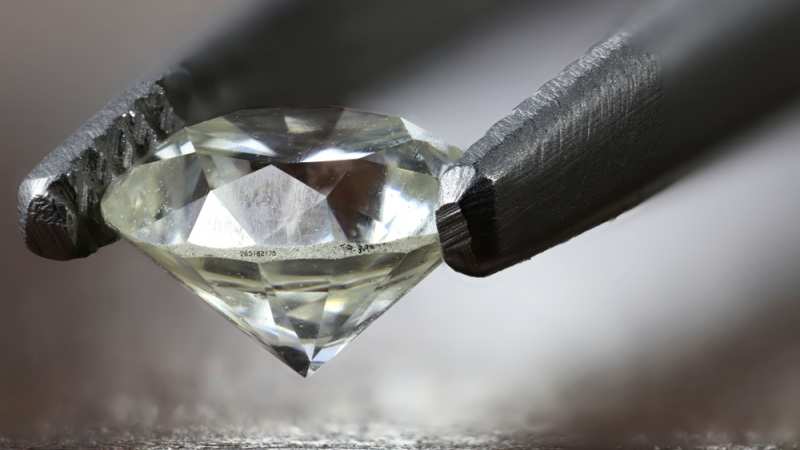
Modern Brilliant Cut Diamond
The majority of jewelry today features brilliant-cut diamonds, which evolved from the old European cut. As technology advanced, diamond-cutting machinery improved, and craftsmen became more creative, resulting in more precise gem-cutting techniques. The round brilliant cut is now considered the ideal cut for diamonds. However, this was not always the case.
In the past, there was no standardized grading system for diamonds. It wasn’t until 1939 that clarity, cut, carat weight, and color grading came into play. While the other grading factors depend on nature’s creations, the diamond cut relies on the skills and techniques of craftsmen. The brilliant cut features prominent table facets, longer lower half facets, and star facets.
A brilliant-cut diamond typically has 56 to 58 facets, including a culet. There are approximately 32 facets between the girdle and the table and 24 facets below the girdle. Unlike the old European cut, the table of a brilliant-cut diamond is flat rather than domed.
These facets maximize the reflection of light from within the diamond, enhancing its fire, brilliance, and sparkle. When it comes to sparkle, it’s hard to find a more lively appearance than that of a brilliant-cut diamond. This cut is ideal for those who appreciate a dazzling and radiant look.
If you’re interested in learning more about the differences between antique and modern diamond cuts, continue reading!
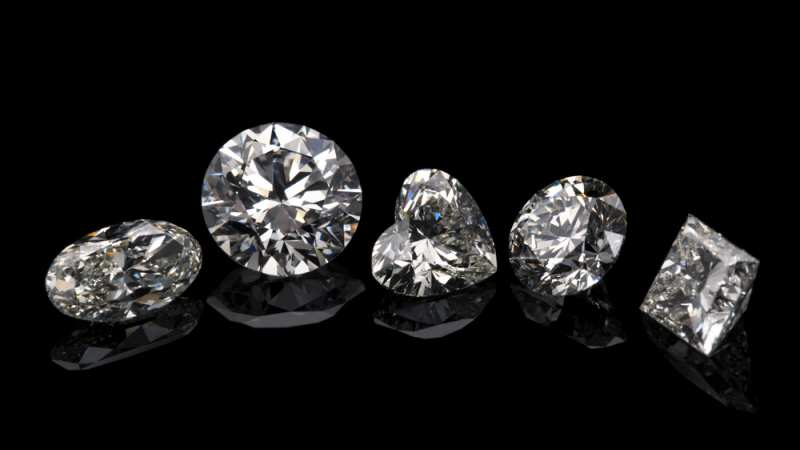
Old European Cut Diamond Vs. Modern Brilliant Cut Diamond
The combination of qualities we mentioned earlier contributes to the distinctive beauty of old cut stones.
It’s important to note that both the modern round brilliant diamond and the old European diamond cut have 57 or 58 facets; this remains consistent. However, it is the shape and arrangement of these facets that differentiate each cut.
Old diamonds were primarily cut to enhance their color, while modern round brilliant diamonds are cut to maximize brilliance, as their name suggests. The design of a brilliant-cut diamond allows light to enter and reflect back, creating the dazzling sparkle that has become popular in contemporary jewelry.
On the other hand, antique stones have a unique ability to capture and reflect light, drawing the viewer’s attention in a different way.
Due to being hand-cut, old cut diamonds may lack the symmetrical precision that is commonly associated with modern cuts. It is not uncommon for an old cut diamond to exhibit some irregularities in the shape and alignment of its facets.
If you’re having trouble deciding between the two, we can assist you in making that choice:
If you appreciate vintage aesthetics and prefer a radiant, romantic, and elegant feel, we would recommend selecting an old European cut diamond. It will offer a distinct and feminine allure.
If you prefer a more contemporary, clean, and brilliant appearance, we suggest opting for a brilliant-cut diamond. You’ll experience a greater level of sparkle and fire with this choice.
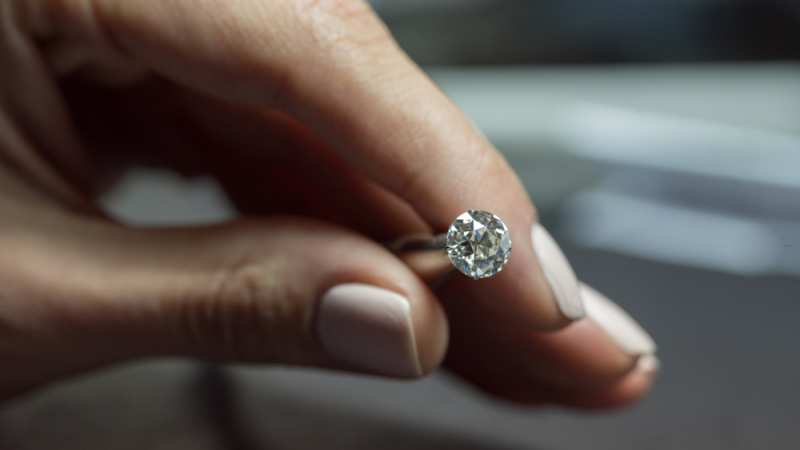
Final Words
We trust that you have gained the knowledge to recognize an old European cut diamond and have picked up additional insights along the journey.
While owning something modern is undoubtedly appealing, antique diamonds hold a special allure with their unique charm. The fact that they were hand-cut adds to their impressive nature.
In our view, it is worthwhile to possess something that can evoke the spirit of the “good old days.” After all, who doesn’t appreciate a touch of nostalgia?
Certainly, we do, and we are aware that we are not alone in this sentiment!


